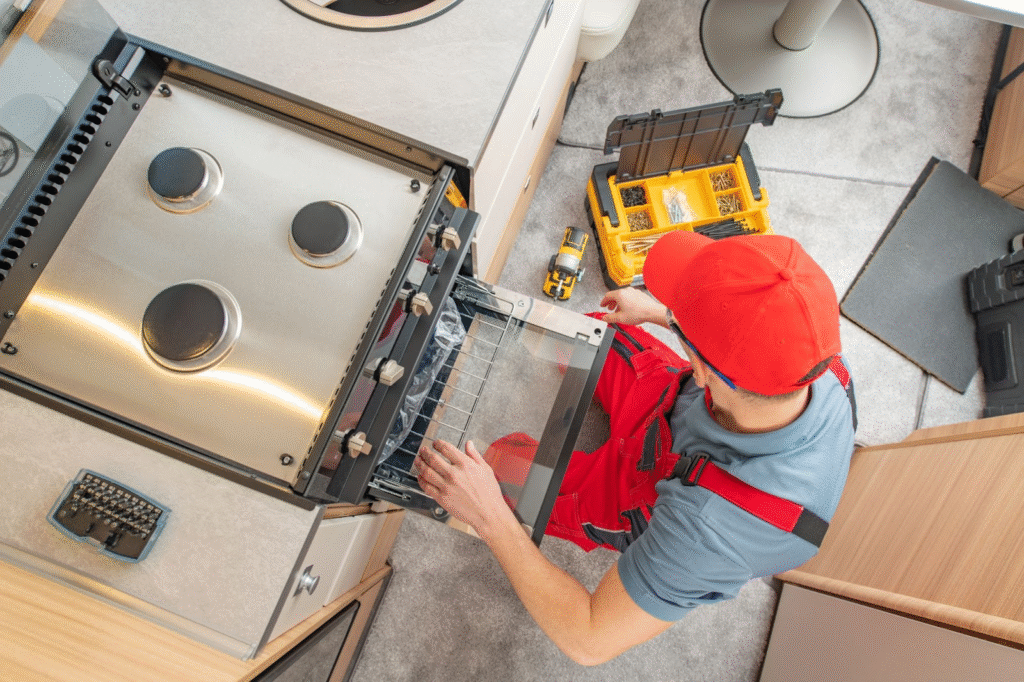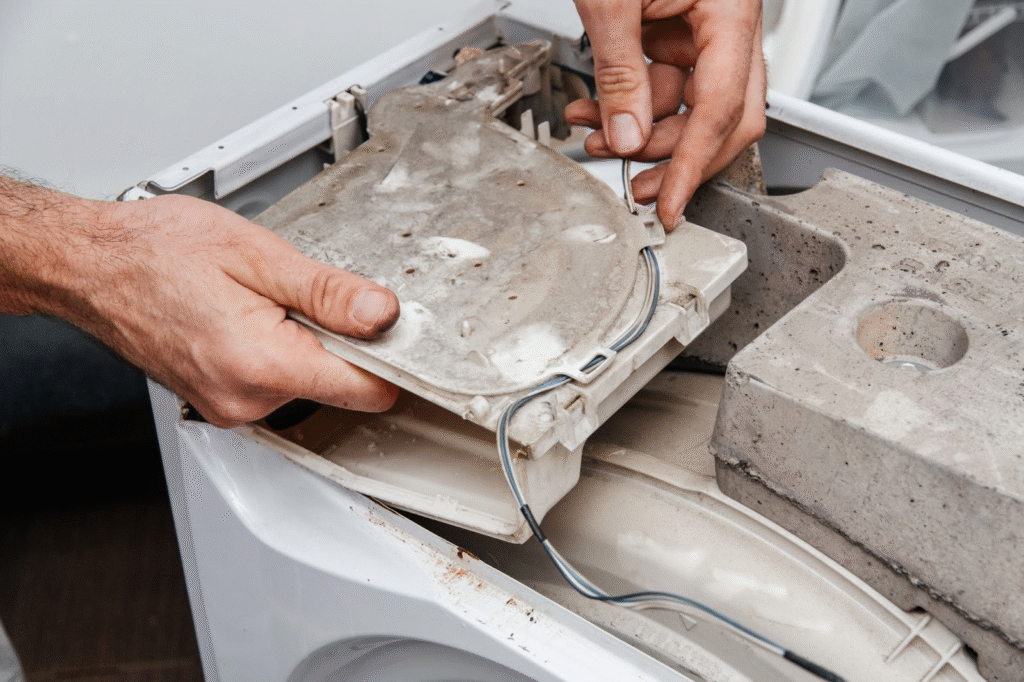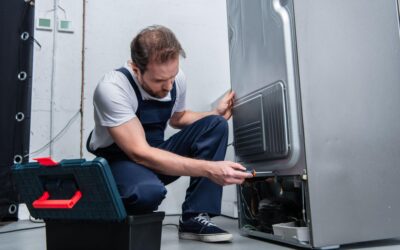Top Signs It’s Time to Repair Appliances in Your Home

Appliances are supposed to make life easier, not interrupt your day. When one breaks down, it’s more than a minor annoyance. Small issues can turn into expensive problems if left unaddressed for too long. Spotting early signs of trouble helps you stay ahead and avoid complete appliance failure. The sooner you recognize these signs, the less you’ll spend fixing or replacing them.
Clear Signs Your Appliances Need Repairs
Appliances usually display warning signs before completely breaking. You might notice changes in sound, energy use, or performance. These issues often show that parts are wearing down or something’s out of place. Addressing the problem quickly avoids long-term damage and higher costs.
Odd Noises
Unexpected sounds are often the first clue. A clunking washer, screeching dryer, or buzzing fridge typically indicates a failing motor or loose part. These noises might initially seem minor, but they typically get louder or more frequent. A noisy appliance rarely operates as it should. Appliance repair services can check belts, bearings, and internal components. Fixing the source prevents further wear and keeps things running smoothly.
Energy Bills Increase for No Clear Reason
When appliances wear down, they use more power to do the same task. That inefficiency causes your energy bills to spike even if you haven’t changed your habits. Refrigerators, HVAC systems, and dryers are common energy hogs when failing. A malfunctioning appliance may be blamed if your utility bill rises without seasonal changes or added usage. Repairing it can restore efficiency and reduce waste. It keeps your household budget in check without sacrificing performance.
Bad Smells
Burning, sour, or musty smells can mean different things, but all signal trouble. A burning smell from your oven or dryer may point to electrical damage or lint buildup. Moldy odors from your washer or dishwasher often come from trapped moisture. Ignoring these smells can lead to damage, safety hazards, or respiratory issues. If cleaning doesn’t solve the problem, internal components may need repair. Appliance technicians can clean, replace, or reseal the affected parts to restore everyday use.
Poor Performance Means You Must Repair Appliances
When your appliance no longer works like it used to, it’s more than wear and tear. Slower cycles, poor temperature control, and repeated failures are warning signs. Addressing them promptly keeps your home comfortable and prevents system shutdowns.
Uneven Temperatures Affect Food and Comfort
Your refrigerator should stay cold, and your oven should heat evenly. If food spoils faster or your oven burns meals, the problem is usually internal. Faulty thermostats, broken heating elements, or blocked vents may be the cause. A service technician can test and replace the defective parts. Quick action saves you from food waste or fire hazards and ensures your appliance runs safely and consistently.
Longer Cycles Waste Time and Energy
If your dryer takes two hours instead of one, something’s wrong. Washers and dishwashers that drag on also point to worn-out components. Motors, sensors, or clogged filters may be causing the delay. Long cycles burn more energy and put extra strain on your appliance. Repairing the issue reduces runtime and operating costs and restores your appliance to factory efficiency.
Constant Shutting Down Means a Faulty Sensor
Appliances that turn off mid-cycle are unreliable and frustrating. This issue can result from power surges, tripped sensors, or faulty circuit boards. You might notice blinking lights, beeping sounds, or reset buttons failing to work. Appliances like microwaves, dishwashers, and dryers often show these problems as they age. Repairing or replacing the faulty part solves the issue. It also prevents the appliance from breaking down at the worst moment.

Visible Signs You Need to Repair Appliances
Visible damage often means deeper issues inside. Leaks, broken buttons, and shaky appliances can damage your home or stop working. Repairing them now prevents long-term costs and household disruption.
Leaking Water Points
Water under your fridge or washer isn’t just a cleaning hassle. It can warp floors, attract mold, and ruin walls. Common causes include damaged hoses, cracked seals, or faulty pumps. These parts wear down with daily use and need replacing over time. If you notice puddles, don’t wait, as moisture leads to expensive home repairs. A professional can quickly find the source and stop the leak before it spreads.
Broken Controls
Knobs that won’t turn, touchscreens that freeze, and missing buttons all get in the way. These minor issues make daily use frustrating and sometimes unsafe. For example, you can’t control temperatures or cycles accurately with a broken interface. Repairing the control panel brings back full function and avoids accidental misuse. Technicians can often replace the control board or buttons without swapping the entire unit, saving money and extending the life of your appliance.
Excess Vibration
If your washer or dryer rocks during use, it’s more than a noise issue. Unbalanced loads, worn shock absorbers, or damaged feet cause shaking. Over time, this can crack the floor or damage nearby walls. Some homeowners even report their machines “walking” across the laundry room. Fixing the internal balance is essential to prevent additional breakdown. Your technician can secure the unit and replace worn-out stabilizers.
Persistent Appliance Problems That Need Repair
Appliances that keep failing aren’t being stubborn—they’re trying to tell you something. If issues return shortly after a fix or you’re constantly troubleshooting the same unit, it’s time to stop applying short-term solutions. These persistent problems usually include internal wear, outdated components, or improper fixes. Addressing the root cause now prevents total breakdown and saves money in the long run.
DIY Fixes Keep Breaking Down Again
Temporary patches don’t hold up when the underlying problem is mechanical. If you’ve had to tape, tighten, or reset the same part more than once, your appliance likely needs professional repair. These makeshift solutions buy time but rarely solve the issue. Over time, repeated stress on faulty components causes deeper internal damage. Ignoring that can shorten the appliance’s life. Professional repairs fix the cause, not just the symptom.
Service Calls Are Happening Too Often
If you call in a technician every few months, your appliance isn’t getting better—it’s getting worse. Frequent breakdowns mean multiple parts may be deteriorating, not just one. Replacing one component at a time won’t fix the whole system. A full diagnostic can reveal broader mechanical failures that more minor repairs miss. Repairing the appliance as a whole may cost less than repeated service visits. This approach brings long-term stability and peace of mind.

Appliance Parts Are Obsolete or Unavailable
Older models often come with a hidden cost: rare or discontinued parts. When manufacturers stop supporting a model, even minor fixes can lead to long wait times or higher repair costs. Some replacement parts may no longer meet safety standards or be compatible with newer components. A technician can assess whether your appliance can still be serviced effectively. If parts are too scarce, it may be time to weigh the cost of further repairs. A thorough repair evaluation will help you decide.
Error Codes Keep Reappearing After Reset
Appliances aren’t being dramatic when they flash error codes—they’re giving a clear warning. If the same code returns after resets or cleaning, the problem is still active. Codes may relate to sensors, water flow, power failures, or overheating. Ignoring them can create bigger electrical or safety risks. Most modern appliances require a diagnostic tool to read and fix these codes. A proper repair clears the error for good and returns your appliance to everyday use.
How Appliance Lifespan Guides Smart Repair Timing
Knowing how long appliances usually last helps you avoid wasting money on repairs that won’t hold up. Washers and dryers last ten to 13 years, while refrigerators often last ten to 15 years. Repairs typically make financial sense if your unit is still in its early or mid-years. But once an appliance nears the end of its life, breakdowns become more frequent and costly. At that point, even minor repairs may only delay an inevitable replacement. Before making the call, a technician can help you weigh the unit’s age, condition, and repair cost.
Seasonal Stress Can Trigger Appliance Breakdowns
Your appliances work harder during certain times of year, and that extra pressure can expose hidden problems. Refrigerators strain in the summer heat to stay cool, while washers and dryers take on more loads during colder months. If components are weak, seasonal demand can push them past their limit. That’s why breakdowns often happen when you need appliances most. Timing repairs before high-use seasons helps avoid mid-season failures and rushed service calls. Preparing ahead keeps your home running smoothly during peak months.
Repair Appliances Before the Damage Spreads
Putting off appliance repairs doesn’t just cost more—it disrupts your life. What starts as a minor issue can quietly wear down other components and become a chain reaction. You protect your home, time, and wallet by acting at the first sign of trouble. Reliable appliances aren’t a luxury but a part of a functional household. Waiting too long leads to replacements you didn’t plan for and stress you don’t need. A timely repair keeps everything moving the way it should.
For practical tips, expert insights, and repair advice that keeps your home steady, visit the Cooling & Heating Repair blog and stay ahead of the breakdown.
Categories
- AC installation
- AC Installer
- AC Repair
- AC Repair/Heater Repair
- AC System Maintenance
- Air Conditioning Repair
- Air Conditioning Services
- Appliance Repair
- Furnace Repair
- Heater Repair
- Heater Repair Services
- Heating Services
- HVAC
- HVAC and Appliance Repair Services
- HVAC Installation
- HVAC Services
- Promotion
- Thermostat installation
- Uncategorized
